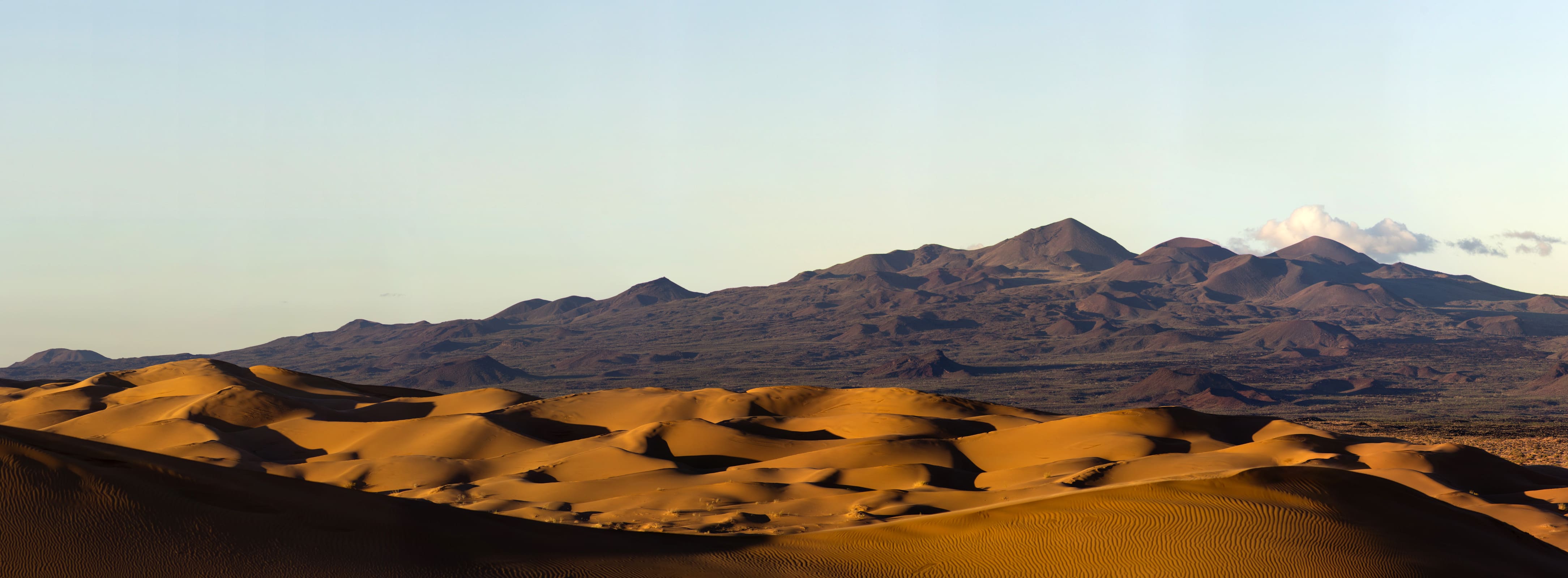El Pinacate
One of the most intensely surreal landscapes of perfectly round craters and cinder cone volcanoes, it's a surprisingly accessible visitor center and an expansive desert of dunes, wildlife, and the imagination.

El Pinacate and the Gran Desierto del Altar Biosphere Reserve is the giant desert reserve to the right when you're driving southward from the border to the beaches at Puerto Peñasco. The mountains begin to be visible some 30 minutes south of the border and have long marked a psychological and even surrealist frontier. The roughly one-hour drive offers some spectacular scenery, but it only get more intense once you venture in.
A massive UNESCO World Heritage Site, it's an area of exceptional biodiversity, but people come especially for the tremendous volcanic landscapes. The craters, El Elegante in the east nearest the highway, and those of Mars, El Trebol, and El Arena, further west sit just on the rim of the giant and increasingly barren Gran Desierto del Altar. In addition to the ten nearly perfect circular craters, the desert is home to more than 540 species of plants, 40 species of mammals, 200 species of birds, 40 species of reptiles, plus amphibians, freshwater fish, many of them endemic and endangered. And this is before you reach the eastern edge of the equally giant Alto Golfo de California reserve that continues across the border with Baja California to the west.
The area is named for the Pinacate Peaks, the tallest of which is the Cerro del Pinacate at about 1,190 meters in height. Its name derives from a type of beetle called the pinacatl in the Nahuatl language. The volcanoes last erupted some 11,000 years ago.
The area is the domain of scientists and adventure travelers. But neither will be disappointed. Nearly all visitors to the area with arrive from points to the north or the south as mentioned. There is a small museum and visitors center, the Museo y Centro de Visitantes Schuk Toak, about 25 minutes (23.2 kms) just outside of Puerto Peñasco. The museum provides a very solid program for understanding the natural (and human) history of the area. The visitor center is built on the largest and most recent lava flow that occurred at the site. It's a very good introduction to the broader area especially for less experienced adventurers.
.